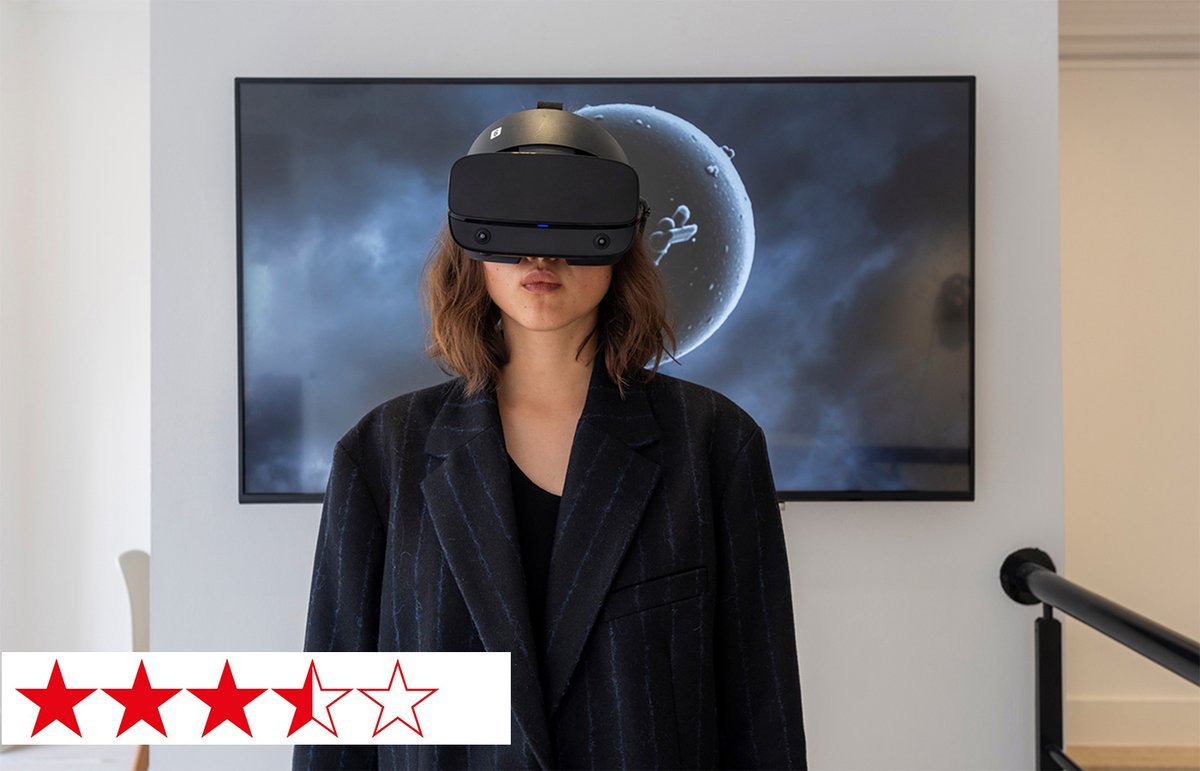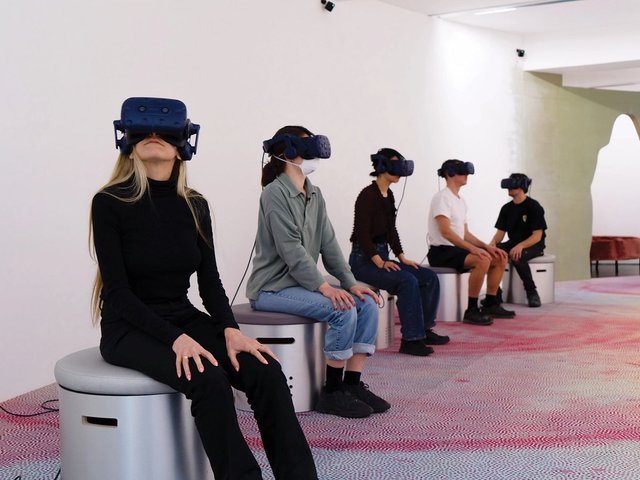Enter Through The Headset, a VR exhibition at Gazelli Art House London
In the art world today, virtual reality (VR) is operating in two overlapping capacities: as a platform and as a medium. With its ability to transport our experience, mediated by a device we don’t see while immersed, it would seem perfect for a global pandemic, offering both social distance and means of escape. The Art Newspaper's XR Panel has looked at a mix of these capacities but this review of Gazelli Art House London’s Enter Through The Headset marks its first review—carried out by a special guest panel—of a VR exhibition in a physical gallery. With reported cases of Covid-19 on the rise in London, our panellists discuss their decision to enter the gallery as well as the headset. — Gretchen Andrew
- Gretchen Andrew, a regular member of The Art Newspaper's XR Panel, exhibits with Gazelli and has therefore recused herself from the panel for this review.
What is it?
Gazelli Art House’s fifth edition of Enter Through The Headset: a group show featuring 10 VR works—by Rebecca Allen, Jocelyn Anquetil, BRiGHTBLACK, Claudia Hart, Michael Takeo Magruder with Drew Baker, Gibson/Martelli with Roche & Mercier, Matterlurgy, Mbryonic with Xavier Sole, Iain Nicholls and Matteo Zamagni.
Where to Find it:
Gazelli Art House, 39 Dover Street, London W1S 4NN. Until 17 October 2020
BOOK EXHIBITION TICKETS HERE (free)
They Say:
We are pleased to unveil Enter Through The Headset 5, our biggest VR show to date. To mark the fifth anniversary of the groundbreaking new media group exhibition, we will be featuring both previous participants and new talent from our Gazell.io online residency
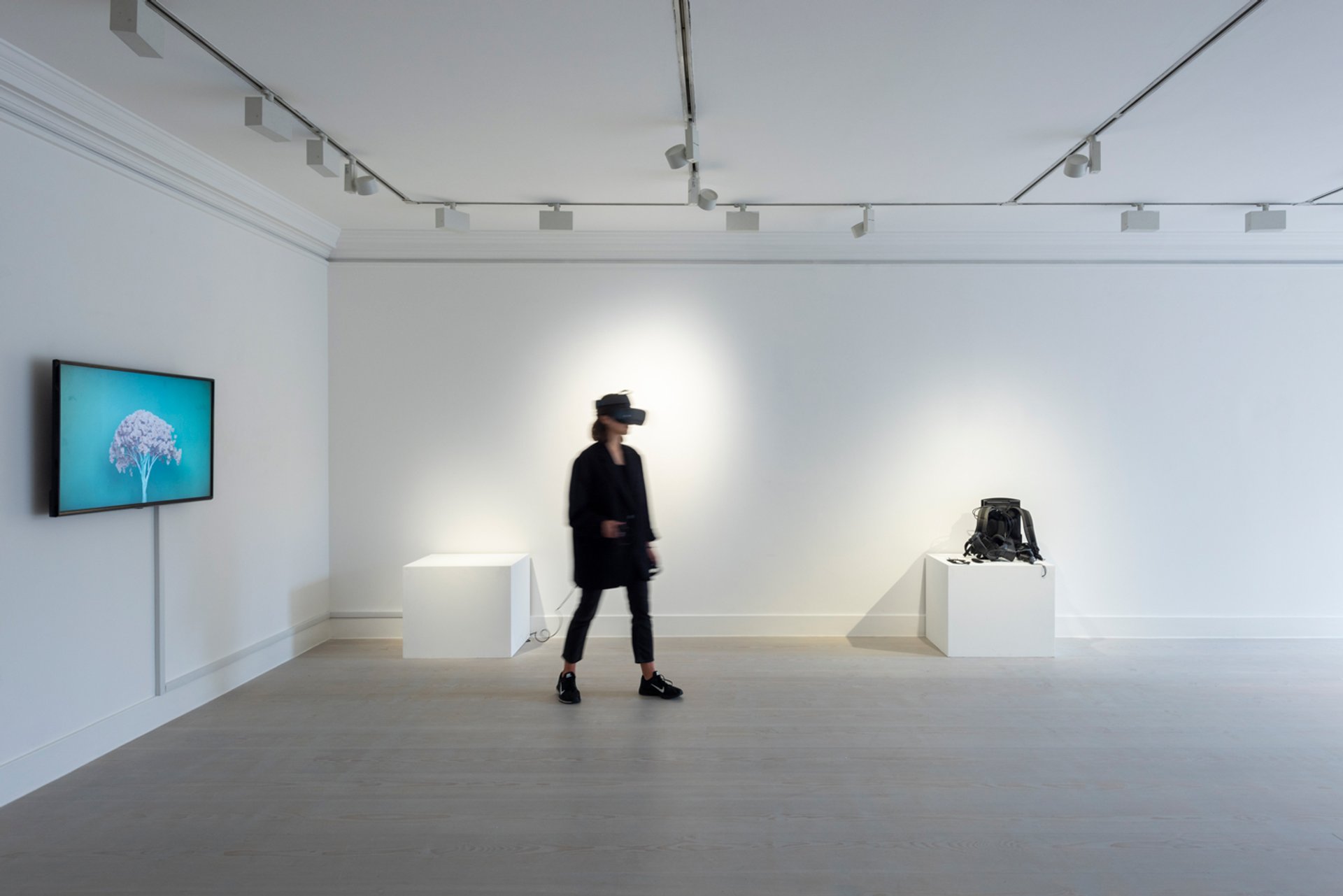
This is the fifth annual edition of Enter Through The Headset at Gazelli Art House London
The XR panel's ratings
We Say:
At first, it feels like you are entering a video game and you are the protagonist. But once you get used to it you can really enjoy the work and let yourself be absorbed into itDjenai Delerue
Djenai Delerue: Enter Through The Headset 5 features various artists from Gazelli's new media group exhibition. On entering the gallery space, you are instantly confronted by an unusual layout and know you are about to experience something different.
My first thought was that, in a white cube environment, the lack of works on the walls and floor made me feel very strange. I did not really know how to act around the space; all the rituals and habits are challenged. Each artwork was different and used its immersive nature differently. I went from VR headset to VR headset; isolating myself from the world and going on a journey for the next 15 minutes.
It took me a bit of time to get used to the idea and sensations of VR. Especially when each experience challenged the senses in a different way. But when I managed to let go of the initial discomfort, I could really grasp the intricacy and meaning behind the artworks. Indeed, at first it feels like you are entering a video game and are the protagonist. But once you get used to it you can really enjoy the work and let yourself be absorbed into it.
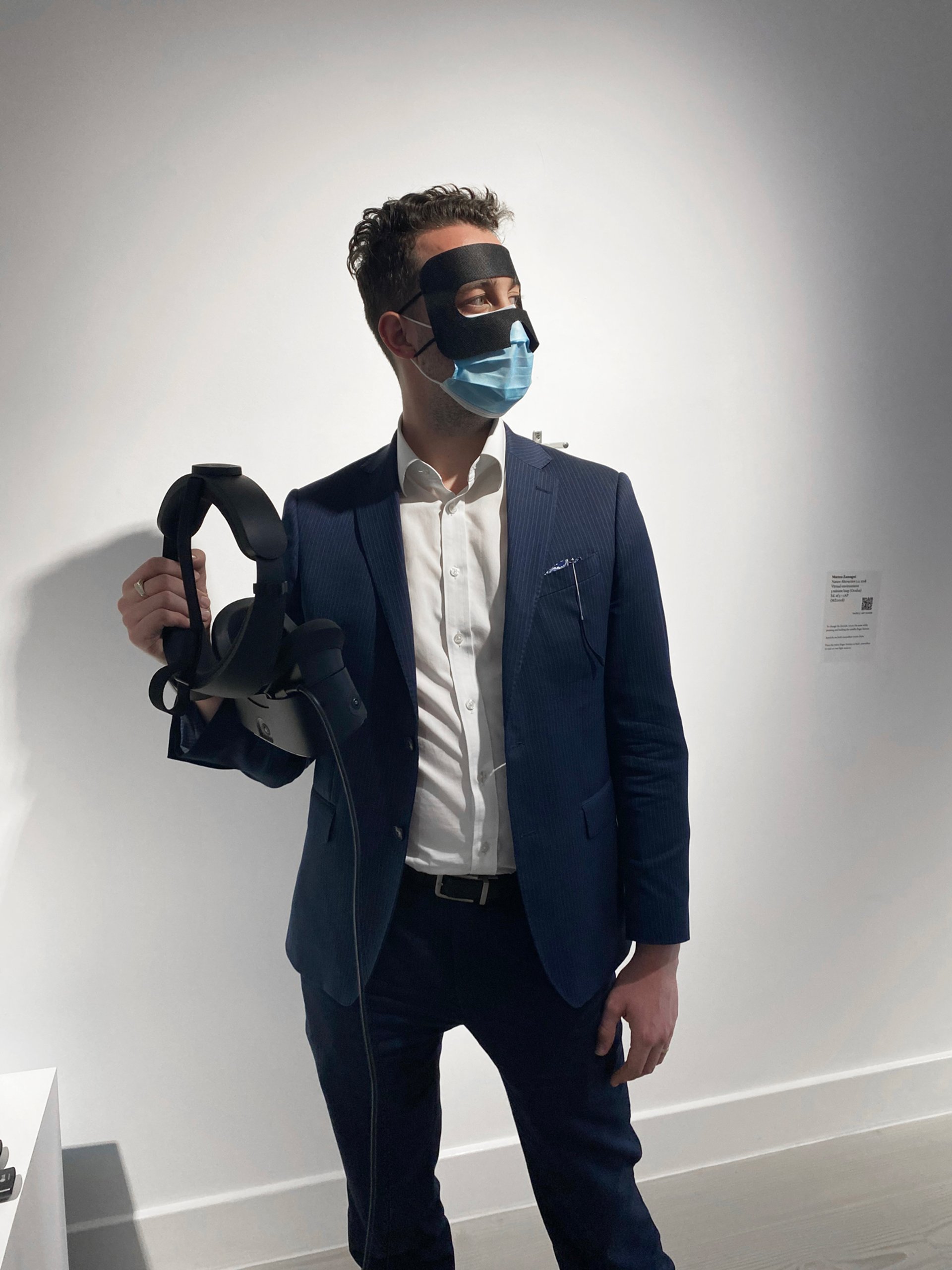
Headsets are wiped down and put in a UV Cleanbox between each use
Any concerns I might have had about hygiene ... rapidly vanished ... and the friendly staff explained their sanitising routine of wiping down each headset before placing them in a UV CleanboxMargot Mottaz
Margot Mottaz: I admit to having been reluctant to travel into central London to visit exhibitions lately, let alone ones dedicated exclusively to VR. Wearing a mask in public spaces and then placing a shared headset on my face felt counterintuitive, if not plain foolish. Any concerns I might have had about hygiene, however, rapidly vanished as I stepped into the gallery with a colleague—our pre-booked slot ensured we were alone—and the friendly staff explained their sanitising routine of wiping down each headset before placing them in a UV Cleanbox.
Iain Nicholls, Egyptian Tomb , 2019 Virtual environment (HTC Vive)
So I dived, head first, into the alternate universes of six or seven artists—the remaining ones sadly unavailable at the time due to glitches and other technical difficulties. I entered an ancient Egyptian tomb, watched stick figures dance all around me, and tried to jump over an ever-expanding wall in a deserted landscape. The experience was enjoyable, and I am excited to see the gallery continue to embrace the technology for this fifth edition of the show, but I left feeling that more could still be done with the medium both in terms of the art and its display.
In a moment where there are restrictions ... on how we live in our social universe, and on the way we experience the world in general, this exhibition gave me a feeling of a relieving spatial and mental freedomOlimpia Saccone
Olimpia Saccone: Enter Trough the Headset 5 features an incredible selections of artists who employ VR as a medium to create interactive installations to debate about timely issues such as our environment, the impact of communication technologies and barriers. In a moment where there are restrictions that have a significant impact on how we live in our social universe, and on the way we experience the world in general, this exhibition gave me a feeling of a relieving spatial and mental freedom. Each artwork offers an intimate, yet all-embracing experience of the virtual spaces shaped by the ingenuity and creativity of the showcased artists.
What was the set-up of the exhibition and what was it like to be there?
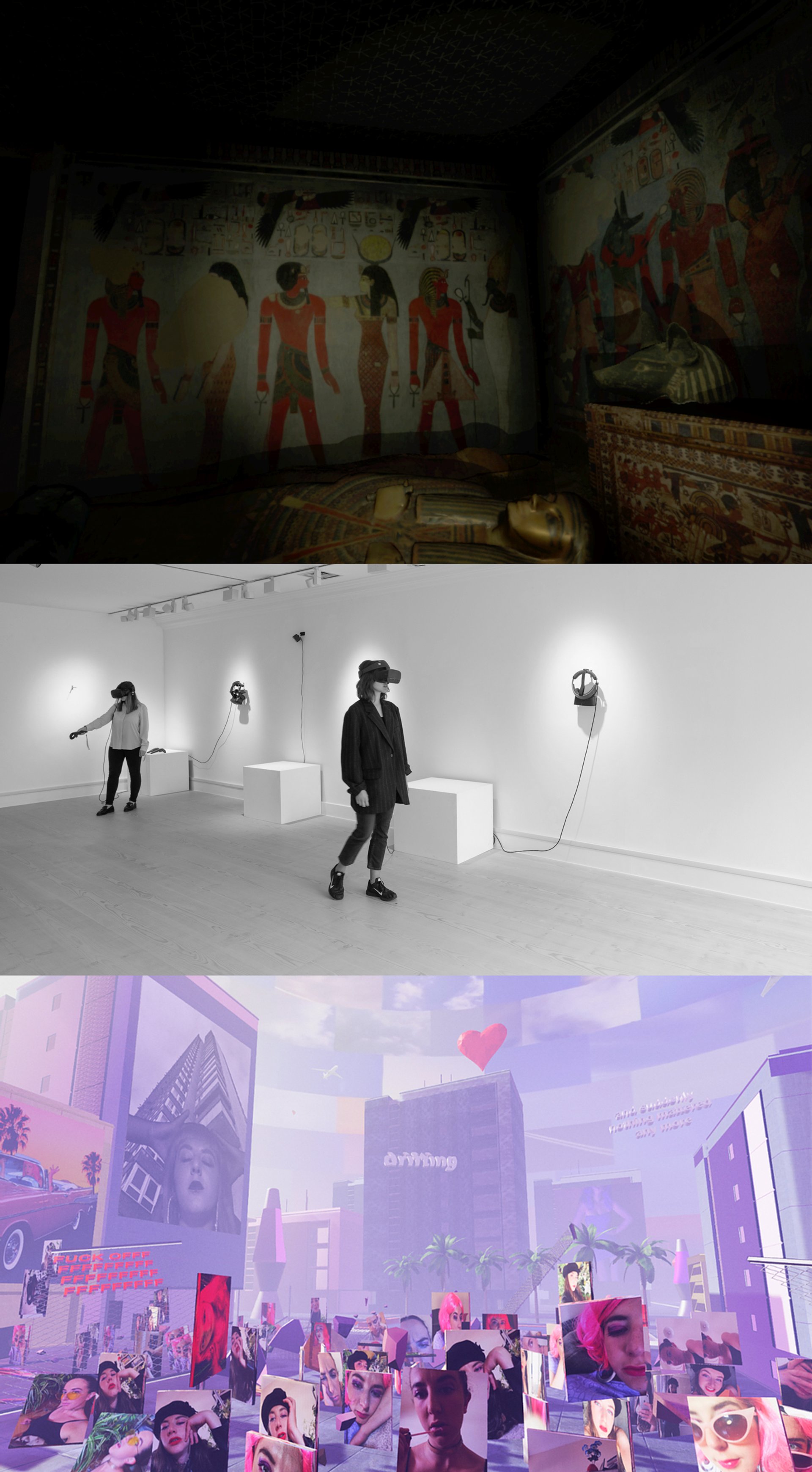
Enter Through The Headset 5: 'It is an interesting approach to curating because being back in the gallery is so drastically different to the headset spaces that it is like palate cleansing as you move from one work to the next'
The emptiness of the gallery is in contrast with the richness, in terms of colours, forms and sound, that hides behind the headset, and this contributes to the sense of surprise that comes from the discovery of the piecesOlimpia Saccone
Djenai Delerue: You walk through the glass door and are faced with a familiar white cube space. However, the walls are bare, and the space looks empty. Then you spot the headsets hanging on little hooks or on top of white plinths. Each headset is an artwork. As you put on the headset you can view/experience the work. As you lower the VR glasses you start seeing and interacting with the artwork. As you turn and walk around you can see the work in its entirety. Some of the works require you to use remotes that allow you to jump, touch and open things.
It is as if the works are inside your head and, you need to escape reality in order to connect with them. Some of the works have sound/dialogue that gives you an immersive experience. You are alone experiencing each work. As you go from one to the other you find yourself entering another dimension and the contrast with the blankness of the exterior makes the experience all the more intense. It is an interesting approach to curating because being back in the gallery is so drastically different to the headset spaces that it is like palate cleansing as you move from one work to the next.
Margot Mottaz: VR exhibitions require entering twice: once through the gallery door, and once again through the headset, as the title of this show indicates. And until the second threshold is crossed, there is hardly anything to see. Here, a dozen Oculus and HTC Vive headsets hung on walls or sat on plinths across two floors, both painted white. The display of art in VR certainly poses some challenges, and I am looking forward to more experimentation and creativity in this area with, for example, VR works that integrate seamlessly with their physical installations. Until then, I find some degree of pleasure watching other people move around unexpectedly, fully absorbed in an artwork.
Olimpia Saccone: The gallery looks emptier than during exhibitions featuring other mediums, like paintings or sculptures. The only physical objects that a visitor can find are several plinths, each with a headset on top, and screens on the walls when the artwork requires one. The emptiness of the gallery is in contrast with the richness, in terms of colours, forms and sound, that hides behind the headset, and this contributes to the sense of surprise that comes from the discovery of the pieces.
How good is the art?
Sun Followers by Mbryonic (Tom Szrites and Xan Adderley) with Xavier Sole ... was captivating in a way that it might not have been in another mediumMargot Mottaz
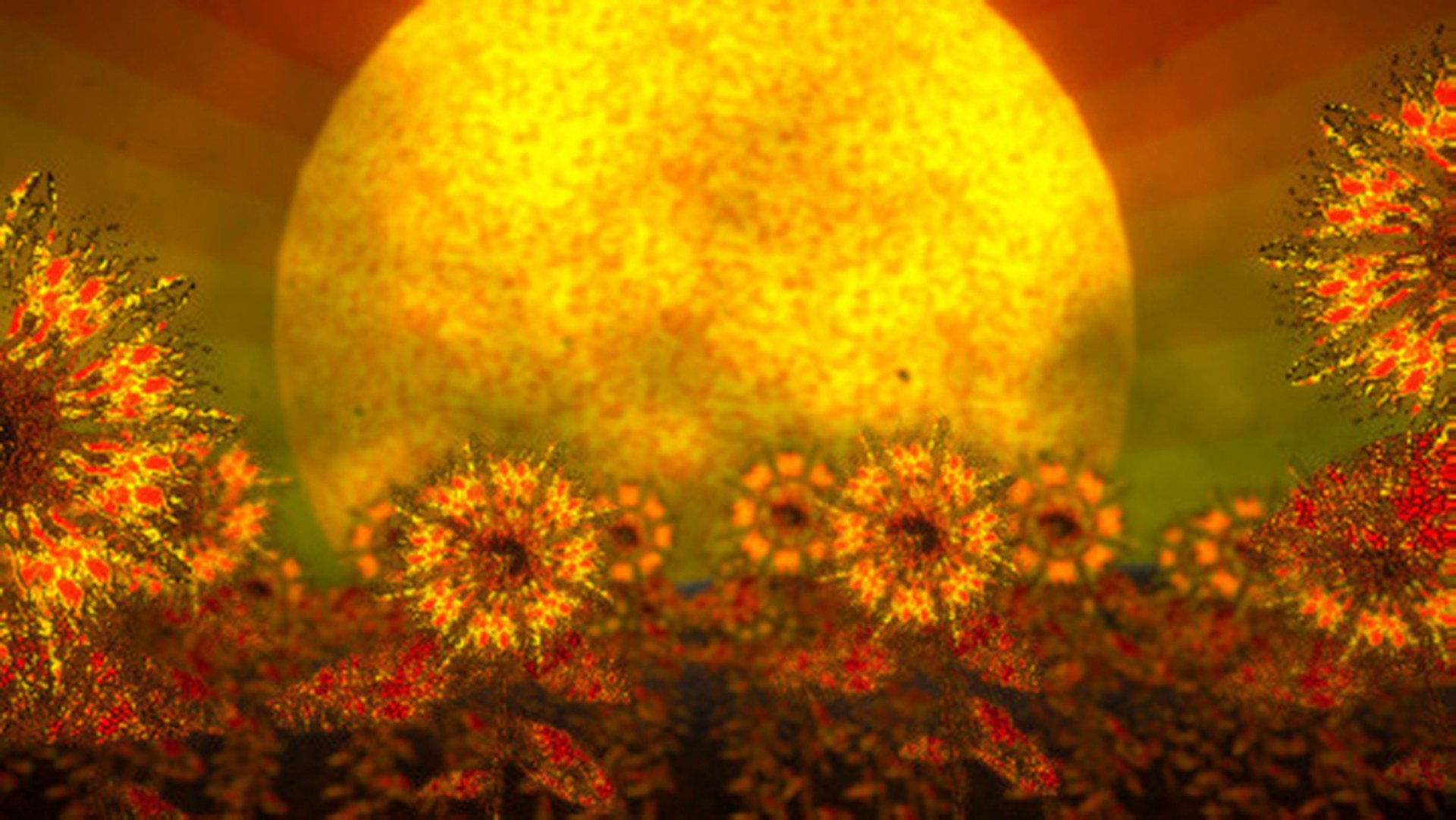
An image from Sun Followers, by Mbryonic (Tom Szrites and Xan Adderley) with Xavier Sole
Djenai Delerue: Separating the works from their medium (VR/AR) is hard, especially because of their immersive and technological nature, and because the parameters change drastically when you encounter something that is such a full-body experience. I found it hard to judge the artworks independently of their medium since the fact that it was VR very much influenced my opinion.
While judging and taking in the art, you have to have a different approach, you need to readjust your criteria. You have to ask yourself: “what am I expecting to feel when putting on the VR set?”, “What should I feel while experiencing this piece?” or “Should I be feeling the same range of emotions as when I encounter a painting, an installation, a performance or a sculpture?”
The pieces chosen by Gazelli showcase a different approach to certain issues and subjects— climate change, Black Lives Matter, history—forcing the viewer to face the message. While some works were weaker, and did not really trigger any emotions or focus on the immersive nature of the medium, as an introduction to VR it was an excellent show with a great selection of work.
Margot Mottaz: I have so far only seen a handful of VR works that have truly blown my mind from an artistic perspective, and I think there is still so much potential there. The most impactful work for me was Sun Follower, by Mbryonic (Tom Szrites and Xan Adderley) with Xavier Sole. Interestingly, it did not employ any particularly advanced VR functionalities, and was more akin to an immersive film, but it was captivating in a way that it might not have been in another medium.
Sun Followers by Mbryonic (Tom Szrites and Xan Adderley) with Xavier Sole
In the work, a cutesy, animated sunflower field begins to burn in the heat of a giant, menacing sun. Over the course of two and half minutes, everything turns to ash and goes black. This was powerful not only because of the urgency of the subject matter—global warming—but even more so because it made me feel like I was one of the charring life-size sunflowers. The sun, behaving like a pendulum, would swing around whenever I tried to look away from it; an urgent reminder of the situation’s inescapability. I think this is a good example of how simple, concise narratives lend themselves well to this medium.
Olimpia Saccone: I found it very interesting that Enter Though the Headset 5 showcases both historic works, such as Rebecca Allen’s Creation Myth (1985), and recent pieces, like Matterlurgy’s Air Morphologies (2020), allowing visitors a glimpse on the development of this medium. In the 21st century we are at a stage in which technology is embedded in our everyday life and in most of our actions, and there has been a shift—especially in museums—towards VR and AR as a medium to experiment with. The showcased pieces succeed in carrying away the viewers and raise questions on what “the canon of art history” will look like in 50 years time.
What is gained by enjoying the works in VR/AR rather than In Real Life?
The first few minutes I felt joy and peace but, after a few minutes, I realised that the contrast between the wall and the void made me a bit anxious and trapped. I believe that if this was not VR it would not have transported me through all of these emotionsDjenai Delerue
(endless) Wall v3.0 (VR documentation) by Michael Takeo Magruder and Drew Baker
Djenai Delerue: (endless) Wall (v3.0) (2020) by Michael Takeo Magruder and Drew Baker was one of the works that stayed with me after I came out of the show. It embodied a lot of emotions and, depending where you looked, it triggered a different one. As you lower the glasses on to your eyes you enter a virtual world where on one side you have a wall and on the other you have emptiness. You are walking on grass and as you look around you see the sky all around you; it is as if you are on a floating island in the sky. The first few minutes I felt joy and peace but, after a few minutes, I realised that the contrast between the wall and the void made me feel a bit anxious and trapped. I believe that if this was not VR it would not have transported me through all of these emotions. It feels like you are imprisoned in your own head and the immersive nature of VR really emphasises this feeling.
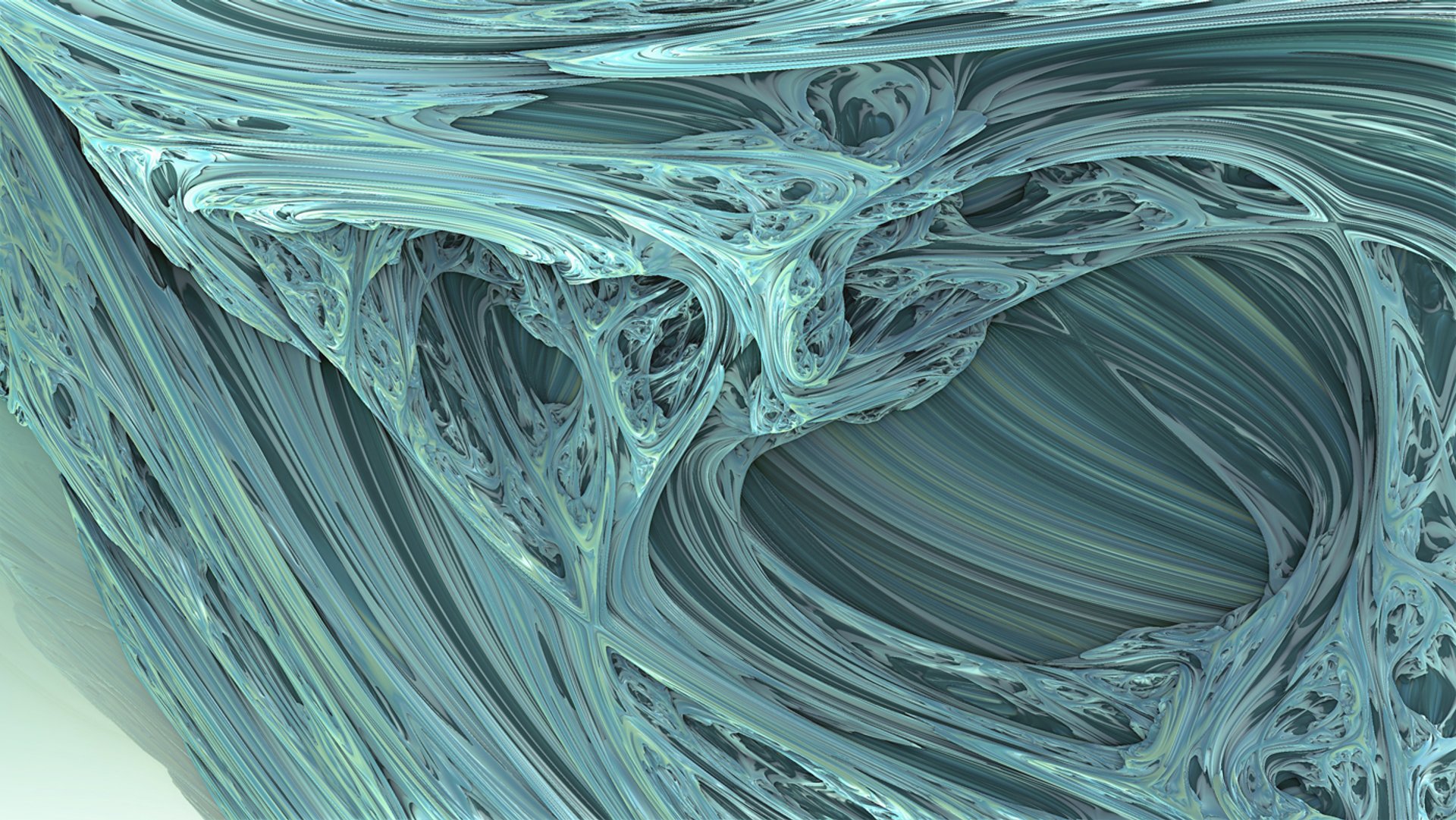
Image from Nature Abstraction 2.0 (2018), by Matteo Zamagni
Nature Abstraction 2.0 (2018) by Matteo Zamagni illustrates how VR can challenger your sensory abilities. This work does it twice, first because of the content and secondly because of the medium itself. The contrast between the real world and the virtual one is crystallised by the scientific referrals. You enter the inside of nature— atoms, DNA—a point of view that you have probably never encountered before, and one that VR allows you to enjoy in the comfort of the gallery.
Margot Mottaz: I guess one could say I experienced the works both in real life and in VR as they are one and the same in this case. While this type of exhibition somewhat limits the possibility of stumbling across a new discovery, the commitment of putting on a headset in order to see the art focuses the mind and makes for a meaningful, intimate viewing.
Expanded Fields VR, 2019 (extract) from Gibson/Martelli
Olimpia Saccone: One of the works I enjoyed the most is Gibson/Martelli 's Expanded Fields (2019) in collaboration with dance artist Jenny Roche and composer Mel Mercier. This artwork features choreography, but a sort of “X-ray” of what real-life choreography is. Thanks to VR, spectators find themselves in the hidden and inherent sensations that dancers experience when performing. Through the use of simple lines that move to the rhythm of the sound, Expanded Fields shows the real complexity behind human movements.
What medium-specific qualities of VR/AR do the works within the exhibition employ?
The added use of sound and/or controllers made some works more interactive than others, encouraging viewers to actively explore the spaces and transform the artworkMargot Mottaz
Djenai Delerue: Most of the artworks play on the immersive nature of VR/AR; transporting the viewer somewhere entirely different. Most of them create a fictional world where the connection to the real world is severed or with little reference to our reality. There is a great similarity with video art; it is like entering a screen.
Margot Mottaz: Beyond 360-degree immersion, the works roughly fell into two camps: those that defied gravity with objects moving across all dimensions, and those that resembled video games with real or imagined landscapes to be navigated. The added use of sound and/or controllers made some works more interactive than others, encouraging viewers to actively explore the spaces and transform the artworks.
Olimpia Saccone: The show successfully uses headset display that remove all interactions with the outside world and that creates a completely immersive sensation. Some of the experiences have motion controllers too.
Air Morphologies, from Matterlurgy
The special guest XR Panel
Djenai Delerue is an Art Historian, specialised in modern and contemporary Asian art focused on Asia because of her Vietnamese and Cambodian origins. She is currently completing a MSc in International Politics at SOAS in order to build a bridge between politics and art.
Margot Mottaz is the Associate Curator at Superblue, a groundbreaking new enterprise dedicated to producing, presenting, and engaging the public with experiential art. She regularly speaks on panels about the use of technology in contemporary art practices and has been a first-round judge for the Lumen Prize for Digital Art since 2015.
Olimpia Saccone is an art historian and art professional specialised in business development and communications within the sector. She has worked with emerging digital and AI artists, and she is a member of The International Art Market Studies Association.


